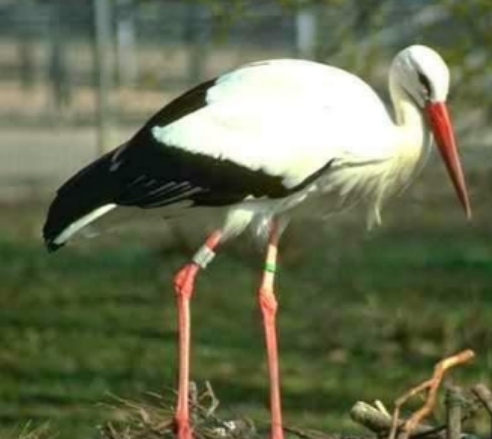

CBSE Class 7 Science Notes Chapter 7: Our is the ideal platform for you if you're searching for weather, climate, and adaptation Class 7 notes and don't know how to quickly rewrite the entire chapter. These CBSE Class 7 Science Notes Chapter 7 on weather and climate are thoughtfully crafted by the most recent CBSE syllabus.
The CBSE Class 7 Science Notes Chapter 7 give students a summary of every topic in the chapter, which makes it simpler for them to comprehend and retain the main ideas. We also offer the added advantage of rapidly downloading these notes. To improve your score on the CBSE board exam, sign up online for science tutoring for Class 7 notes here.CBSE Class 7 Science Notes Chapter 7 Overview
Science VII, Chapter 7 Students preparing for exams might find thorough study material in the notes offered by us. Students will study the principles of climate and weather in this chapter, as well as how they differ and how they affect animal and bird migration and adaptation. The chapter will conclude with some Important Questions. Subject matter specialists have created the Class 7 Science Chapter 7 Notes by the CBSE Syllabus and its most recent standards. All of the important topics discussed in the chapter are covered in these notes. As a result, before the test, pupils can quickly review them all. You can simply obtain the Chapter 7 Science Class 7 Notes from the website.CBSE Class 7 Science Notes Chapter 7 PDF
We give the students easily downloadable class 7 notes in PDF format regarding weather, climate, and animal adaptation to climate. Students can now learn offline more easily because they can study at their comfort level and their speed. If the students would rather study in groups with their friends or if they feel uncomfortable studying online, they can also have the study materials printed.CBSE Class 7 Science Notes Chapter 7 PDF
CBSE Class 7 Science Notes Chapter 7
Weather
Weather is defined as the atmospheric condition of any place regularly and is determined by various factors, including humidity, temperature, wind speed, etc.
The daily condition of the atmosphere at a place, determined by variables like temperature, humidity, wind speed, and so forth, is called the weather . A device known as a
hygrometer
is used to measure humidity, which is the amount of water vapour in the atmosphere.
The average weather at a certain place over an extended period is referred to as the climate.
A device known as a
hygrometer
is used to measure humidity, which is the amount of water vapour in the atmosphere.
The average weather at a certain place over an extended period is referred to as the climate.
Fronts and Weather Conditions
Weather is produced by the interaction of several factors, including: A location's weather is never continuous. It may change once a day or even once an hour. For example, in some places, it may be sunny in the morning but cloudy in the evening.
A minimum-maximum thermometer is used to measure the minimum and maximum temperatures of the day, which are always included in a location's weather report. The morning hours are when the lowest temperature is felt, and the afternoon hours are when the highest temperature is felt.
A location's weather is never continuous. It may change once a day or even once an hour. For example, in some places, it may be sunny in the morning but cloudy in the evening.
A minimum-maximum thermometer is used to measure the minimum and maximum temperatures of the day, which are always included in a location's weather report. The morning hours are when the lowest temperature is felt, and the afternoon hours are when the highest temperature is felt.
- temperature or heat
- humidity or amount of water vapour in the air
- wind and atmospheric pressure.
- precipitation or the amount of rain
- cloudiness or the amount of cloud cover
- visibility is how far you can look into the horizon
- Wind and atmospheric pressure
Weather vs Climate
- Meteorologists record the weather every day.
- The records of the weather have been preserved for the past several decades.
- These help us to determine the weather pattern at a place.
- The average of the weather pattern over some time is determined by the climate.
| Basis | Climate | Weather |
| Definition | The average condition expected at a particular place in a given timeframe | The atmospheric condition at a particular point in time |
| Projection | carried out using the total of weather statistics over a time frame of 30 years | carried out by collating data regarding meteorology, such as solar radiation, air temperature, humidity, pressure, speed of the wind and its direction |
| Underlying Factors | The total weather statistics for the time frame of 30 years | Periodic measurements of atmospheric pressure, rainfall, speed and direction of the wind, humidity overcasts and other unstable factors |
| Study-subject | Climatology | Meteorology |
| Ingredients | comprises elements like humidity, rainfall, sunlight, wind speed, a natural phenomenon like fog, frost and so on in a particular period | comprises weather elements such as overcasts, rainfall, floods, hailstorms, winds, heatwaves, snowfall and many more |
| Time frame | Estimated over a longer period | Estimated over a shorter period |
Meteorology and Climatology
Weather forecasting is meteorology's primary concern. The government's Meteorological Department prepares the daily weather bulletins. This division gathers meteorological data, such as wind and temperature, and forecasts the weather. The study of climate, which is defined as average weather over a given period, is known as climatology.Formation and Types of Clouds
Convection is a process by which clouds form. The warm air that is directly over the ground and heated by the sun tends to get lighter and is lifted upwards with the warm air. The temperature drops as air rises higher, which reduces the air's capacity to hold water vapour. This vapour quickly condenses to form clouds, which are composed of billions of tiny water droplets or ice crystals. When air passes over hills or mountains, it is forced upward, which creates clouds. On a mountain's windward side, clouds and precipitation are common.Climate-Altering Factor
Topography is the term used to describe the form of the land. Sea Level: A region's distance from the sea and other nearby bodies of water has a significant impact on its climate. Ocean Currents: The temperature of a place can be affected by the movement of heat from the land to the sea or vice versa. Even though the aforementioned variables are all-natural, one of the most harmful ones that have caused this climate change is us, humans. Climate Adaptations: An animal's ability to survive in a particular climate is aided by its traits and behaviours.Adaptation has Led to the Classification of Three Regions
Polar Regions: The polar regions have a severe climate. At the poles, the sun never rises or sets for a combined total of six months. Tropical Rainforest: The tropical rainforest experiences extremely rainy and scorching summers. The length of the days and nights is roughly equal throughout the year. Desert: The weather in this area is severe. There's lots of sunshine and not much rain.Tropical Rainforests
Being close to the equator means that the tropical regions of the globe receive more sunshine throughout the year. These places experience a hot environment as a result. In tropical areas, the temperature might go up to 40 °C and barely decrease to 15 °C. In these areas, day and night are nearly identical in duration. However, because of the abundant rainfall, this area is home to tropical rainforests. There is a great diversity of plants and animals found in the tropical rainforests. Because of the dense population, animals in these areas frequently face competition for food. Numerous animals have modified themselves to enable them to dwell on trees and have easy access to food. These animals' skin tones are typically comparable to those of their surroundings, which helps them to both obtain prey and fend off predators. Numerous of these animals also have superior hearing and vision.Migration
 It is the extensive migration of animals, particularly birds, from colder to warmer climates to reproduce, avoid the cold, or deal with a shortage of food.
Birds follow the light of the stars at night, and the light of the sun during the day. A Siberian crane travels from Siberia to India once a year.
It is the extensive migration of animals, particularly birds, from colder to warmer climates to reproduce, avoid the cold, or deal with a shortage of food.
Birds follow the light of the stars at night, and the light of the sun during the day. A Siberian crane travels from Siberia to India once a year.
Animal Adaptation
The secret to surviving on Earth is the capacity to adjust to harsh weather patterns. For instance, to defend oneself from predators, polar bears have evolved to develop long, white fur. Their survival in the frigid arctic areas is aided by the substantial amount of fat beneath their epidermis. Every species on the planet has evolved certain traits to help them thrive in their particular environments.Tropical Rainforests
The areas surrounding the equator, where temperatures are consistently very high, are home to tropical rainforests. The temperature drops below 15°C in the winter and rises to above 40°C in the summer.Desert
The climate of these regions is extremely hot and arid because of continuous exposure to sunlight and minimum rainfall.Benefits of CBSE Class 7 Science Notes Chapter 7
- This revision notes PDF covers most of the themes and subtopics in an easy-to-read, point-by-point format that makes it simple for students to prepare for the test.
- All the relevant details from this chapter are included in these notes, together with clear definitions of terminology, photos with captions, and examples.
- The best part of the CBSE Class 7 Science Chapter 7 PDF is that students may download it for offline study or see it for free online.
CBSE Class 7 Science Notes Chapter 7 FAQs
Are notes important for class 7?
CBSE notes provide a concise and organized overview of key concepts and topics: CBSE notes are typically prepared by subject experts or experienced teachers and are designed to provide students with a clear and concise overview of the material.
Which is the most important chapter in science class 7?
For CBSE class 7 NCERT books are the base. So, a few chapters are important or may require more effort like acids, bases and salts, soil, respiration in animals, transportation in animals and plants, reproduction in plants, motion and time, light, electric current and its effect
How does the sun affect the climate Class 7?
The weather is mainly affected by the sun that produces heat and raise the temperature of earth's surface, oceans and atmosphere. the sun's heat will change the atmosphere more frequently. The time of sunrise and sunset also changes throughout the year.
🔥 Trending Blogs
Talk to a counsellorHave doubts? Our support team will be happy to assist you!

Check out these Related Articles
Free Learning Resources
PW Books
Notes (Class 10-12)
PW Study Materials
Notes (Class 6-9)
Ncert Solutions
Govt Exams
Class 6th to 12th Online Courses
Govt Job Exams Courses
UPSC Coaching
Defence Exam Coaching
Gate Exam Coaching
Other Exams
Know about Physics Wallah
Physics Wallah is an Indian edtech platform that provides accessible & comprehensive learning experiences to students from Class 6th to postgraduate level. We also provide extensive NCERT solutions, sample paper, NEET, JEE Mains, BITSAT previous year papers & more such resources to students. Physics Wallah also caters to over 3.5 million registered students and over 78 lakh+ Youtube subscribers with 4.8 rating on its app.
We Stand Out because
We provide students with intensive courses with India’s qualified & experienced faculties & mentors. PW strives to make the learning experience comprehensive and accessible for students of all sections of society. We believe in empowering every single student who couldn't dream of a good career in engineering and medical field earlier.
Our Key Focus Areas
Physics Wallah's main focus is to make the learning experience as economical as possible for all students. With our affordable courses like Lakshya, Udaan and Arjuna and many others, we have been able to provide a platform for lakhs of aspirants. From providing Chemistry, Maths, Physics formula to giving e-books of eminent authors like RD Sharma, RS Aggarwal and Lakhmir Singh, PW focuses on every single student's need for preparation.
What Makes Us Different
Physics Wallah strives to develop a comprehensive pedagogical structure for students, where they get a state-of-the-art learning experience with study material and resources. Apart from catering students preparing for JEE Mains and NEET, PW also provides study material for each state board like Uttar Pradesh, Bihar, and others
Copyright © 2025 Physicswallah Limited All rights reserved.










